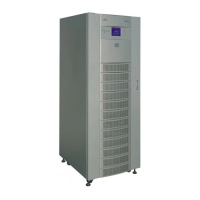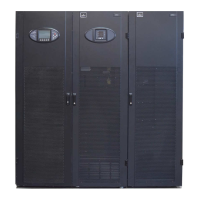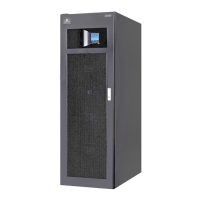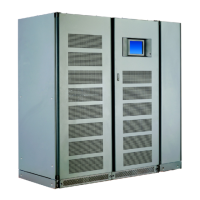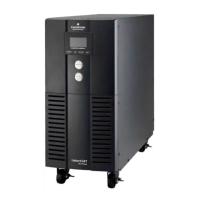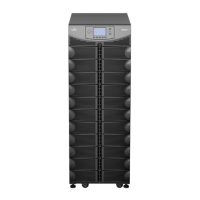Do you have a question about the Emerson Liebert NX and is the answer not in the manual?
| Topology | Double Conversion Online |
|---|---|
| Frequency | 50/60 Hz |
| Dimensions | Varies by model |
| Weight | Varies by model |
| Product Type | UPS |
| Battery Type | Lithium-ion |
| Communication Ports | SNMP |
| Operating Temperature | 0°C to 40°C (32°F to 104°F) |
| Humidity | 0% to 95% (non-condensing) |
Instructions to save for future reference and safe operation.
Overview of positioning and cabling requirements for the UPS.
Steps to perform before installing the UPS, checking for damage and correct equipment.
Guidelines for selecting a suitable room for UPS installation, considering ventilation and temperature.
Recommendations for the environment where external batteries should be mounted.
Instructions for storing the equipment before installation to protect against environmental factors.
Information on how UPS modules and battery cabinets are designed to be positioned.
Details about the UPS's internal battery configuration and options.
Safety precautions and methods for moving UPS and battery cabinets.
Guidelines for overcurrent protection and split-bypass input requirements.
Requirements for residual current devices installed upstream of the UPS.
Protection requirements for external batteries.
Protective devices for load distribution.
Procedures for connecting power cables to the UPS input and output terminals.
Details on the monitor board's capabilities for managing system parameters and alarms.
Description of input dry contacts for external signals.
Interface details for the maintenance bypass cabinet.
Interface for connecting an external battery circuit breaker.
Description of output dry contacts for alarm signals.
How to use the Emergency Power Off (EPO) function.
Interlock protection for external bypass switches.
Procedure for starting the UPS using the battery.
Overview of UPS battery banks, autonomy time, and configurations.
Critical safety precautions when working with UPS batteries.
Use of battery cabinets for larger battery configurations and autonomy.
Impact of temperature on battery performance and lifespan.
Broad principles for fitting and connecting battery power cables.
Guidelines for unobstructed space and clearance when fitting batteries.
Steps and recommendations for connecting battery cables.
Conditions for cell layout, service platforms, and battery protection.
Requirements for multi-module UPS installation and remote emergency stop.
Procedure for placing and interconnecting UPS modules in a parallel system.
Reference to single module installation for protective devices.
Similarities and differences in power cable wiring for parallel systems.
Intermodule control cable configuration for parallel systems.
Placing and interconnecting UPS modules for hot standby configuration.
Reference to single module installation for protective devices.
Power cable wiring for upstream and downstream UPS in hot standby.
Installation of UPS modules for dual bus systems with static transfer switch.
Reference to single module installation for protective devices.
Power cable wiring for dual bus systems.
Connecting DBS cables for dual bus configuration.
Using DBS interface box for non-NX UPS configurations.
Overview of Liebert NX UPS functionality and basic operation.
Explanation of the split-bypass configuration for the UPS.
How the static transfer switch manages load connection between inverter and bypass.
How internal and external sensors optimize battery management.
Compatibility and configuration of multi-module UPS systems.
Conditions for paralleling UPS modules for higher reliability.
Description of the UPS operating in double-conversion mode, supplying the load.
UPS operation during AC mains failure, powered by batteries.
Settings for charging current, boost voltage, float charge, and temperature compensation.
Battery self-test and other advanced settings configured by engineers.
Instructions for switching modes, resetting, and operating the UPS.
Explanation of the input circuit breaker (CB1) and rotary switch (SW1) functions.
Step-by-step guide to starting the UPS from a powered-down state.
Procedures for switching between normal, battery, and bypass modes.
Overview of the control panel as the access point for monitoring and control.
Explanation of the LEDs on the mimic flow chart indicating UPS status.
Description of the audible alarm sounds and their meanings.
Functions of direct access buttons like EPO, Inverter ON/OFF.
How to navigate and use the LCD monitor and menu keys.
Optional equipment for protecting the UPS system.
Optional device to detect battery leakage current for safety.
How to set baud rates for communication cards.
Optional panel for remote status and alarm monitoring.
Procedure for installing and replacing dust filters.
List of European and international standards the UPS conforms to.

